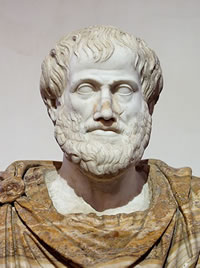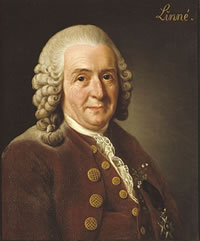Animal Classification

Facts about creatures
- Home
- Animal Classification
- Animal Habitats
- Amphibians
- Arthropods
- Bats
- Birds
- Carnivorans
- Cetaceans
- Chordates
- Crustaceans
- Dinosaurs
- Diprotodonts
- Elephants
- Fish
- Golden Mole
- Insects
- Lagomorphs
- Mammals
- Mammal Teeth
- Marsupial Mole
- Metamorphosis
- Mollusks
- Primates
- Reptiles
- Rodents
- Ruminants
- Soricomorphans
- Tenrec
- Tetrapods
- Vertebrates
Animal Classification
- Hits: 39088
Taxonomy is the science of classifying living things, including animals.
The word comes from the Greek words taxis (arrangement) and nomos (laws), so taxonomy means the “law of arranging”.
Taxonomy is also sometimes used to mean a system of classifying non-living things.
For example, there can be a taxonomy of occupations or a taxonomy of sports.

Human beings often have a natural desire to categorize the things around them.
Different human cultures have different folk taxonomies that are based on the appearance and behavior of the creatures that they know.
For example, to some people, any small, crawling animal with a hard outer skeleton is a “bug”.
The creation story of the Bible, in the Book of Genesis, uses a simple taxonomy, with animals being classified as either creatures of the sea, birds, or creatures of the Earth.
Aristotle, a Greek scientist and philosopher who lived in the 4th Century BC (BCE), was the first person that we know to have devised a rational scheme for classifying living things.
The system that Aristotle invented was based on complexity. He organized living organisms in order of how complex he believed theywere, from the lowest (tiny invertebrates) to the highest (human beings).
Aristotle’s classifications were based on these organism’s observable characteristics.
Aristotle divided animals into two types – those with blood and those without blood. This division corresponds closely to the division between vertebrates and invertebrates that biologists use today.
He organized animals with similar characteristics into groups that he called genera. (The singular form is genus.)
Within the animals with blood, there were five genera
- Four legged animals (quadrupeds) that give birth to live young – corresponding to mammals that live on land
- Quadrupeds that lay eggs – corresponding to reptiles and amphibian
- Birds
- Whale
- Fish
Animals without blood were divided among:
- Insects – Aristotle considered spiders, centipedes and scorpions to be insects
- Cephalopods – which include squids and octopuses
- Crustaceans
- Shelled animals – for example, mollusks and echinoderms
- Zoophytes – animals that resemble plants, such as anemones
Linnaeus
In the 18th century, Carl Linnaeus (also known as Carolus Linnaeus or Karl von Linné), a Swedish scientist, developed a hierarchical taxonomic system
In this system, nature was made up of three kingdoms: animal, vegetable and mineral.

Below the highest rank of kingdom, there were the following five additional ranks:
- Class
- Order
- Genus
- Species
- An additional ranking below species
Linnaeus divided the animal kingdom into six classes:
- Quadrupeds – which corresponded to mammals
- Birds
- Fish
- Amphibians – which included both reptiles and amphibians as we know them today. Early in the 19th century, the French naturalist Pierre André Latreille published a work in which he divided reptiles and amphibians into two separate classes.
- Insects
- Worms and mollusks – which included many different kinds of invertebrates.
Within each ranking, a group of organisms that belong together is known as a taxonomic group, or taxon. (The plural form is taxa.)
Linnaeus developed a system of using two words to name a species. This system is known as binomial nomenclature.
The first word, which is capitalized, is the name of the genus to which the species belongs.
The second word, called the specific name, is a word that describes the species. It is not capitalized.
For example, in binomial nomenclature, human beings are the species Homo sapiens. Homo is the genus name and sapiens, which is Latin for “wise”, is the specific name.
Modern Use of Linnaean Classification
Today, scientists all over the world use the Linnaean classification system.
It has been modified to include more rankings.
The modern rankings include
- Domain
- Kingdom
- Phylum (The singular form is phylum.)
- Class
- Order
- Family
- Tribe
- Genus
- Species
- Variety or subspecies
There can be intermediate rankings, such as “superfamily” or “subtribe”.
The domain is a ranking above kingdom.
Biologists have not always agreed on how the living things on Earth should be divided into domains.
In 1990, Carl Woese, an American biologist, developed a classification system that divides living things into three domains:
- Archaea
- Bacteria
- Eukaryotes
Archaea and bacteria are prokaryotes – singled-celled organisms that have no nuclei.
Archaea live in extreme environments, such as deep sea vents.
Eukaryotes are organisms made of cells that contain nuclei. A eukaryote may consist of one cell, or it may be made up of many cells
Biologists also disagree about many kingdoms there are.
One modern taxonomic system includes the following seven kingdoms:
- Animals
- Plants
- Archaea
- Bacteria
- Chromista (a group of algae, most of which have chlorophyll)
- Protozoa (single-celled prokaryotes)
- Fungi

Cladistics
When Linnaeus developed his taxonomic system, Charles Darwin had not yet published On the Origin of Species, which described the process of evolution.
Scientists were not aware of how different species were related to one another by descent.
In Linnaeus’s system, living things were grouped together because they shared similar characteristics.
His classification system was designed to make it easy for scientists to identify the group to which a particular creature belonged.
After Darwin’s work was published, biologists agreed that a classification system should be based on ancestry, with organism sharing a common ancestor being placed in the same group.
In the 1960s, Emil Hans Willi Hennig, a German biologist, developed a taxonomic system in which taxa are arranged in an evolutionary tree, also known as a phylogenetic tree.
This system came to be known as cladistic taxonomy, or cladistics.
Fossil records and genetic data are used to determine where particular organisms belong on the tree.
Cladistics uses cladograms – diagrams that show how species are related by ancestry.
A branch in a cladogram is known as a clade. All the organisms in a clade share a common ancestor, and no organisms outside of the clade have that ancestor.